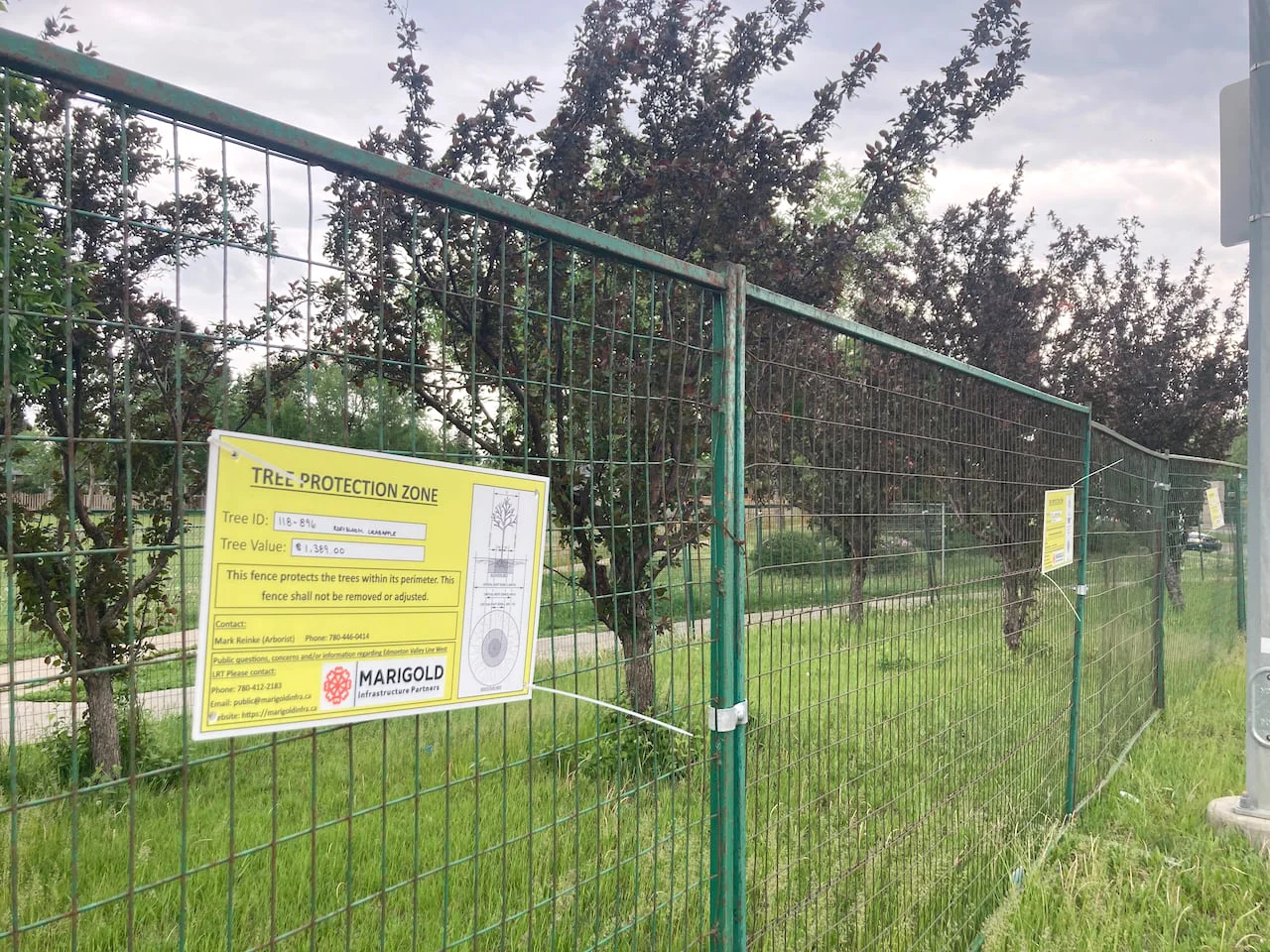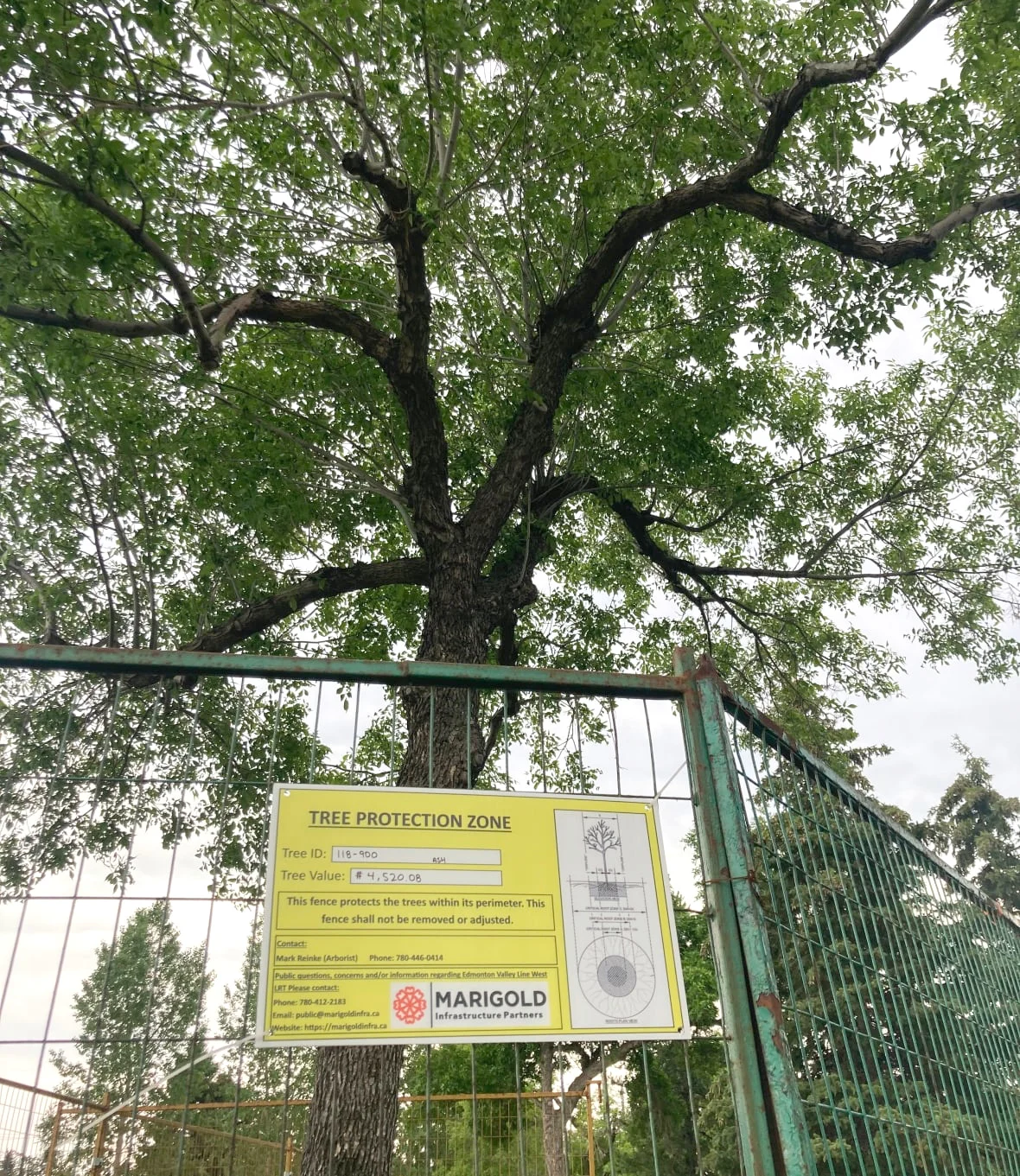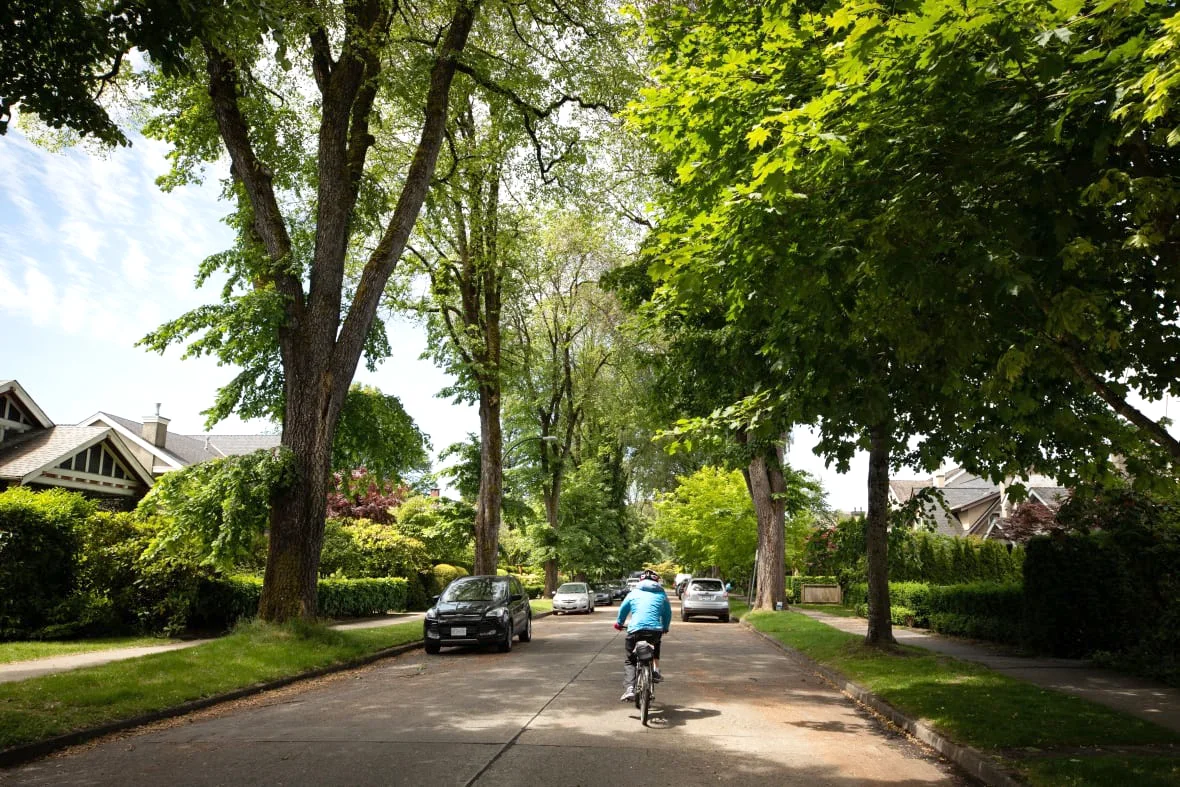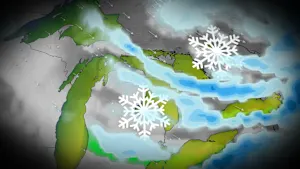
How much is a tree worth? Experts say cities should log the climate benefits
Along a street in Edmonton, mature trees sit protected by a green fence, near the construction of a new light-rail transit line.
Signs affixed to the fence show the value of the foliage: a rosybloom crabapple tree is worth $1,389, while nearby a spruce is pegged at $2,185.
These price tags are somewhat of a common practice in Canada, where an assessment formula is used to determine the monetary value of a tree in case it is damaged or killed.
But forestry and biology experts say those dollar amounts don't fully capture the environmental value of trees in an urban landscape — especially as they play an increasingly important role in helping to deal with the effects of climate change.
"I think the monetary assessments are an important tool that we have, but we need to take them with a grain of salt in terms of what they may be capturing and what they may be missing," said Carly Ziter, an assistant professor of biology at Concordia University in Montreal.
Some of the benefits often unaccounted for, particularly in urban centres, include the cooling effect of trees and potential energy savings, their ability to capture carbon and their role in maintaining biodiversity.
Such aspects need to be assessed to determine a tree's true value, experts say, in order to encourage preservation of the current tree population — and to better protect the next generation of growth.
What's a tree worth?
Determining a tree's economic worth is not a new practice; municipalities and property owners typically turn to arborists or other experts for plant appraisal, and the value is determined based on several factors including height, species, health, and location.
Those factors are then used as part of a formula to determine a monetary amount in the event of an asset loss, as is done in Edmonton.
But the formula that Edmonton and many other municipalities use — The Guide for Plant Appraisal — doesn't yet include an environmental benefit element, said Jacqueline Butler, an arborist and project leader in the city's forestry department.

These valuations are somewhat common in Canada, where an assessment formula is used to determine the monetary worth of a tree in case of damage. (Stephanie Dubois/CBC)
One of the reasons why Canadian municipalities use the guide's formula, and other similar appraisal methods, is because those values are defensible in court when there may be property disputes or other legal challenges, said Michael Petryk, director of operations with Tree Canada, a non-profit organization dedicated to planting and nurturing trees in rural and urban environments.
"The (courts) would view that tree as a piece of the property," he said.
"It's sometimes viewed as flawed because it doesn't always take into account the environmental benefits that it would have. It's often just viewed as, 'How much is that single property owner benefiting from a tree?'"
Cecil Konijnendijk, a professor of urban forestry at the University of British Columbia in Vancouver, said it's time that more municipalities look beyond the dollar amount and take the time to more widely assess why trees are important.
Many smaller communities in Canada are "often struggling to put a good value on their trees," he said, suggesting that finding some easy-to-use methods "that actually show the true value of the trees" will be key going forward.

Edmonton's tree bylaw requires a permit to work within five metres of a tree located on public property. (Adrienne Lamb/CBC)
Some cities in Canada and elsewhere have already assessed the environmental value of their urban forests — taking into account things like how much oxygen is being processed by a tree or how it's helping with pollution, Konijnendijk said.
In Toronto, for example, the structural value of its urban forest is assessed at about $7 billion, with carbon storage alone valued at $25 million. That's on top of the $28.2 million in ecological services — things like air pollution removal, energy savings and carbon sequestration — that the urban forest provides annually, according to the city's 2021-2022 strategic forest management plan.
One of the ways municipalities are assessing that broader environmental value is by using i-Tree, a popular peer-reviewed software suite from the USDA Forest Service. It helps organizations and city leaders understand how much a single tree or an urban forest removes carbon dioxide and air pollution, and how it can help with stormwater run-off and other benefits.
Even still, Konijnendijk said, the i-Tree formula only captures part of the picture when it comes to assessing a tree's worth.
"We also have things like public health. We have things like biodiversity, aesthetics. And those aspects are often much more difficult to quantify."
Why putting a value on trees matters
There are several ways trees can help cities deal with climate change, said Alison Munson, a professor in forest ecology at Laval University in Quebec City and a member of CRAUM, a research partnership into the city's urban forests.
The cooling effect that tree canopies can provide is extremely important and valuable, she said. In some cases, mature trees can cool down residential areas by several degrees, compared to streets without a similar tree canopy.
A 2019 study led by Ziter found that the right amount of tree cover can lower summer daytime temperatures by as much as 10 F.
There are other benefits, too, said Munson, particularly in urban settings: carbon sequestration as a tree grows, filtering out pollution and particulates in the air — and even buffering against noise.
Realizing these environmental benefits are not only important in the face of climate change, she said, but can also serve as a way for cities to balance densification.
"There's a push toward densification that doesn't always take very well into account the value of the trees," Munson said. "Cities have to take more responsibility toward taking into account these services that are so important."

Research has shown that mature trees, and the canopy they create, can offer a cooling effect for residential neighbourhoods. (Justine Boulin/CBC)
Munson, Konijnendijk and Ziter all say ongoing monitoring of trees and long-term planning around our urban forests will be critical.
"It's not about tree planting as much as it's about keeping the trees alive. The average urban tree doesn't often get much older than 30, 40 years. So if you could double that lifespan, you would get a lot of ecosystem services," said Konijnendijk.
"That's where it starts: The good stewardship of the existing tree population and protecting the trees as best as we can in urban situations."
Ziter said researchers are currently looking at how the environmental value of trees may evolve over the years, as that, too, will be important for both current and future urban trees.
"For example, if we think about the benefits of a tree in terms of temperature regulation or flooding today, those trees may be even more important in a future that is hotter or that floods more often," she said. "Or maybe those trees will no longer be enough to provide that benefit in the future."
How we value our trees can't be a static approach, she said, noting such assessments should take into account the changes we expect to see when it comes to climate.
"Trees take a really long time to grow. In terms of practical applications, the trees we plant now are the trees that we will benefit from 10, 50, 100 years from now."
This article, written by Stephanie Dubois, was originally published for CBC News.
Thumbnail image: Crabapple trees sit behind a protective fence in Edmonton, with their monetary value posted. Nearby construction prompted the establishment of this tree protection zone. (Stephanie Dubois/CBC)









